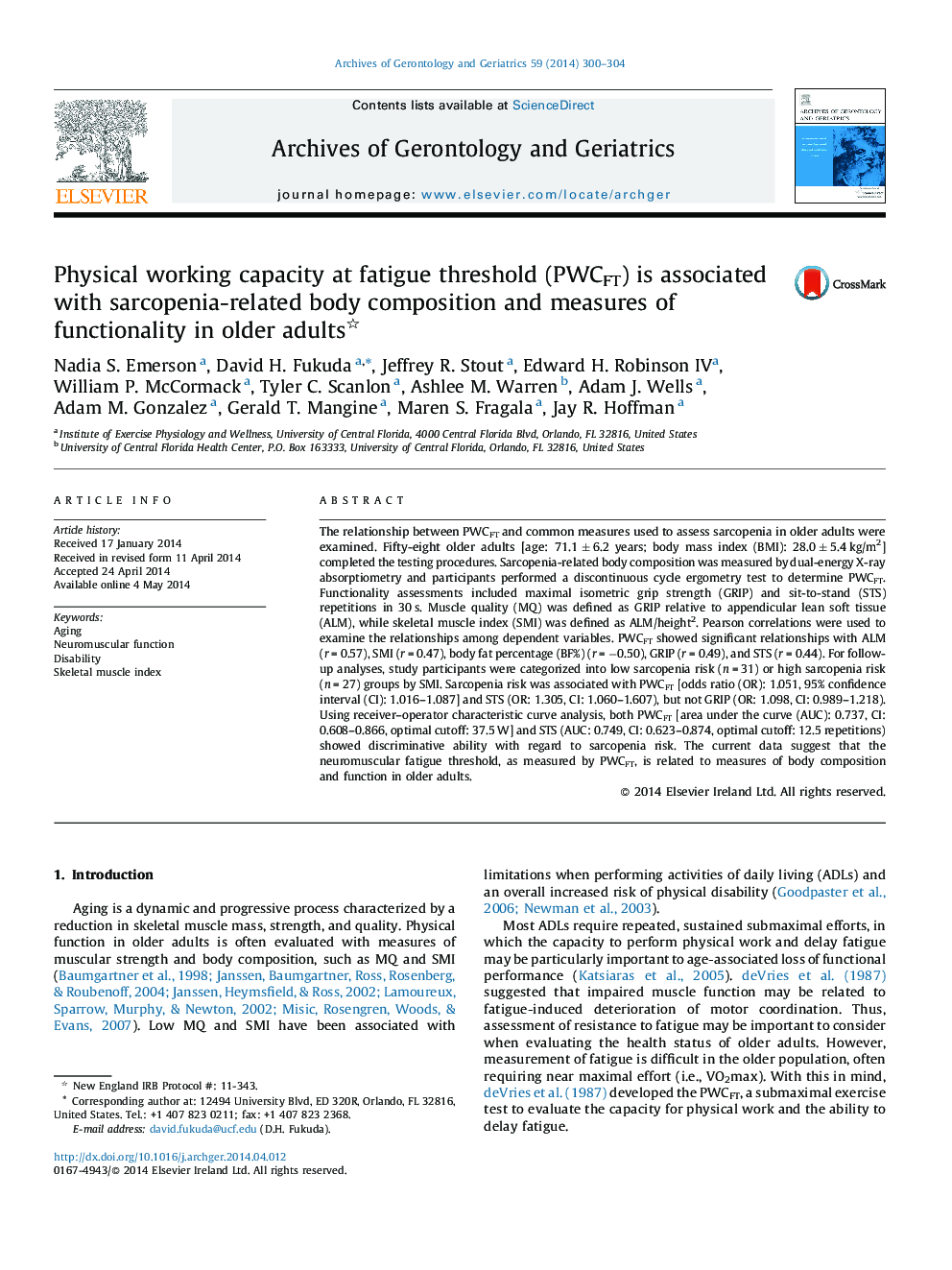| کد مقاله | کد نشریه | سال انتشار | مقاله انگلیسی | نسخه تمام متن |
|---|---|---|---|---|
| 1902933 | 1534435 | 2014 | 5 صفحه PDF | دانلود رایگان |

• The relationship between neuromuscular fatigue and sarcopenia measures was examined.
• PWCFT is significantly related to body composition and functionality/performance.
• Sarcopenia risk is associated with PWCFT and sit-to-stand, but not grip strength.
The relationship between PWCFT and common measures used to assess sarcopenia in older adults were examined. Fifty-eight older adults [age: 71.1 ± 6.2 years; body mass index (BMI): 28.0 ± 5.4 kg/m2] completed the testing procedures. Sarcopenia-related body composition was measured by dual-energy X-ray absorptiometry and participants performed a discontinuous cycle ergometry test to determine PWCFT. Functionality assessments included maximal isometric grip strength (GRIP) and sit-to-stand (STS) repetitions in 30 s. Muscle quality (MQ) was defined as GRIP relative to appendicular lean soft tissue (ALM), while skeletal muscle index (SMI) was defined as ALM/height2. Pearson correlations were used to examine the relationships among dependent variables. PWCFT showed significant relationships with ALM (r = 0.57), SMI (r = 0.47), body fat percentage (BF%) (r = −0.50), GRIP (r = 0.49), and STS (r = 0.44). For follow-up analyses, study participants were categorized into low sarcopenia risk (n = 31) or high sarcopenia risk (n = 27) groups by SMI. Sarcopenia risk was associated with PWCFT [odds ratio (OR): 1.051, 95% confidence interval (CI): 1.016–1.087] and STS (OR: 1.305, CI: 1.060–1.607), but not GRIP (OR: 1.098, CI: 0.989–1.218). Using receiver–operator characteristic curve analysis, both PWCFT [area under the curve (AUC): 0.737, CI: 0.608–0.866, optimal cutoff: 37.5 W] and STS (AUC: 0.749, CI: 0.623–0.874, optimal cutoff: 12.5 repetitions) showed discriminative ability with regard to sarcopenia risk. The current data suggest that the neuromuscular fatigue threshold, as measured by PWCFT, is related to measures of body composition and function in older adults.
Journal: Archives of Gerontology and Geriatrics - Volume 59, Issue 2, September–October 2014, Pages 300–304